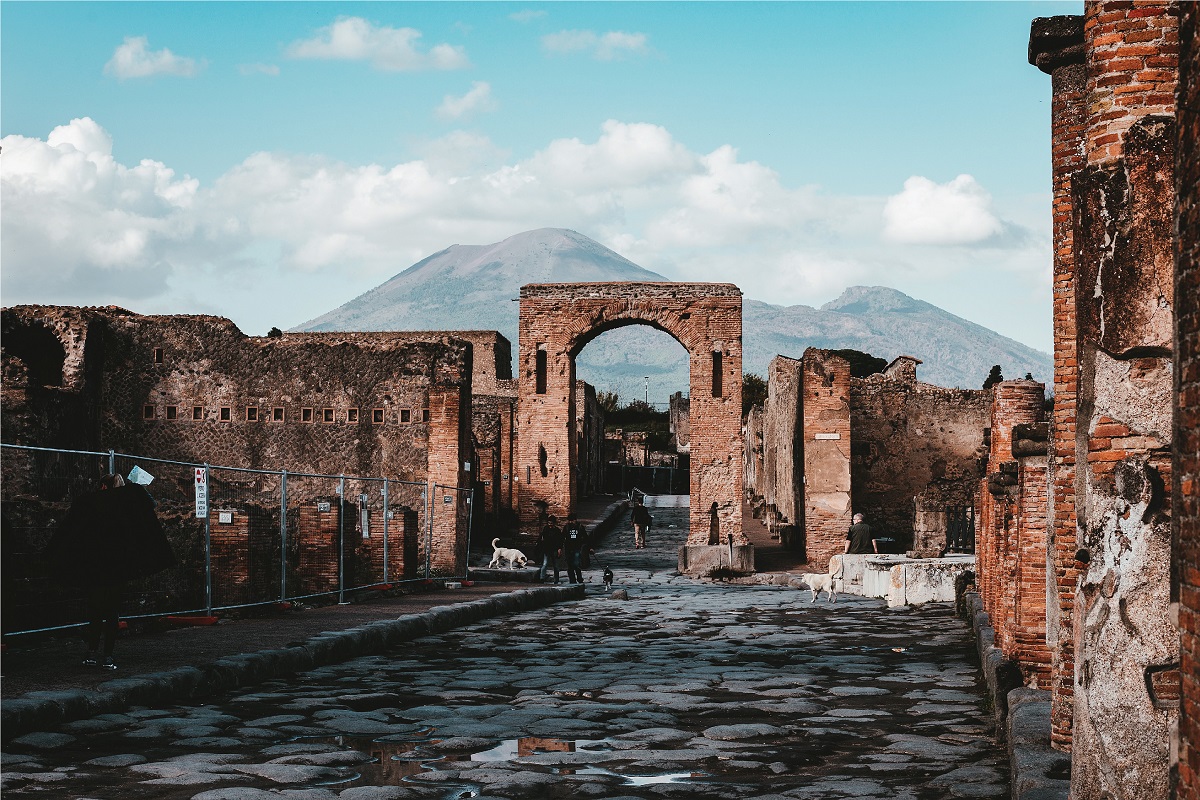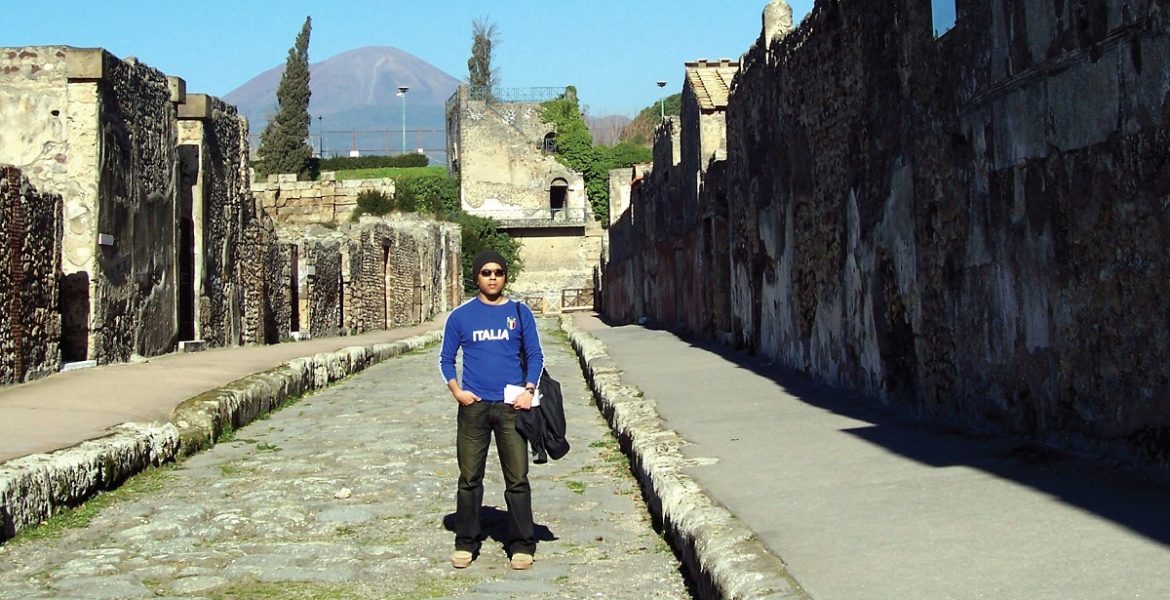Rubaiyat Anwar explores the remains of once-great city Pompeii near the Mount Vesuvius and shares a melange of nostalgia.
I wanted to see the inside of the great pyramid, climb the Great Wall of China, dive under the ocean to explore shipwrecks. Having read countless books on the Last Days of Pompeii, I always wanted to walk those once glorious streets. When the opportunity came up to visit Pompeii while I was in Rome, I jumped on it for both my adult and younger self’s sake. Getting to see history come to life in person.
After a 2-hour train ride from Rome, I arrived at Pompeii. The first thing you notice is its size. Although no one knows for sure, it’s estimated that 20,000 people lived here and the archaeological site covers over 160 acres, so you could easily spend a week wandering around it all.
Today it’s one of the most famous archaeological sites in the world, but Pompeii was just another Roman seaside resort until Mount Vesuvius erupted in 79 AD. Only a day later, thousands of people have been killed, and the whole city was buried under a blanket of volcanic ash 25 metres deep, forgotten until it was unearthed by explorers 1800 years later. The credit goes to German classical archaeologist Johann Joachim Winckelmann.
Without wasting any time, I went on to explore the ancient city hoping to cover it as much as I can in a few hours.
My first stop was the Bath-house. These were initially located in the port area to take care of the sailors’ needs when they arrived into port. It’s hard to imagine now that there was a harbour full of boats in front of where I stood.
After taking in the beauty of the ruins, I went on to my next attraction, Pompeii’s Amphitheatre. Like the Colosseum in Rome, this was where the residents of the city held their gladiator games and circus performances which were two of the most popular forms of entertainment back in those times.

To my fellow travellers, it is always important to stay hydrated when you are exploring such a vast ruin. So pack your bags with water bottles and electrolytes. Flats or sneakers would be best. You’ll be doing a lot of walking, plus the streets of Pompeii are awfully uneven. On that note, always watch where you’re walking. It’s super easy to turn an ankle if you step into one of the many holes in the streets.
My next stop was the Stabian Baths. Much older than the Forums Baths, the Stabian Baths are not quite as well preserved but are still worth visiting for a look at the intricate designs of the rooms. The ceilings were my favourite thing to see in here, but remnants of the beautiful reliefs that once adorned the walls of the baths are worth a look as well.
One spot I was most intrigued was the Villa of the Mysteries. It is located in what was once a suburban area outside of Pompeii, the Villa of the Mysteries is in much better condition than most of the other houses and villas in the city. Thanks to its positioning outside the city, the Villa of the Mysteries received minimal damage in the eruption of Mount Vesuvius, and many of the paintings and frescoes here have been extremely well-preserved. This is also where a number of bodies were, sadly, found as people tried to escape.

As the day came to an end, I realised my visit to Pompeii gave me some insights about memory, preservation and the material culture of death. Walking in Pompeii’s streets, stepping in and out of what used to be houses, bars, restaurants and bathhouses, I wondered what memories were they left behind by the locals before the calamity. The astonishing numbers of objects and structures which still stand today made me think about everything we leave behind in life. Unlike us and unlike our cities- Pompeii is remembered and so are its people. They are remembered in the most accurate, timeless and well-preserved way anyone, possibly, can.
The writer is a brand professional and has travelled over 50 countries all over the globe.

